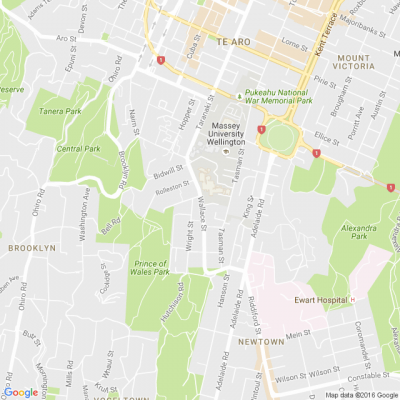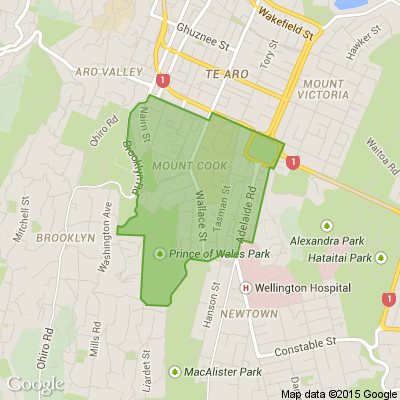
Know what’s happening
Access the private noticeboard for verified neighbours near you. Keep informed about any suspicious activity, send urgent updates to your neighbours when required and discuss emergency planning.
Get to know your neighbours
Browse the directory and start getting to know your neighbours. Don’t want to post to the whole neighbourhood? Send a private message.
Buy, sell and give away
Want to declutter your garage? Buy some used household items? Give away some garden stuff? Become a verified neighbour to browse and post items for sale. Trading is simple when everyone lives nearby.



Thank you for using Neighbourly
You may receive an email confirmation for any offer you selected. The associated companies will contact you directly to activate your requests.
Jeff from Newtown
Wanting to buy crocs sandles or shoes, preferably lace up crocs shoes, up to $40,soles not worn away, sizes 9 to 11,crocs gumboot b good, my old battered knees appreciate the softer impact crocs give, thanks
Price: $40
15 replies (Members only)
Alamzeb from Mount Victoria
Hi there,
Has anyone got a spare Lenovo laptop charger (type C)?
I need it urgently so please let me know if someone can help.
Regards

Mei Leng Wong Reporter from NZ Gardener & Get Growing
Hello neighbours,
It’s coming up to spring, and with everyone stuck at home in Covid lockdown, what better time to get the garden in order? NZ Gardener editor Jo McCarroll and Jack Hobbs, manager of the Auckland Botanic Gardens, are live on Stuff now to answer all your gardening questions.

Reporter Community News
Hi Neighbourly folk, it can be frustrating being locked up at home. All around the country, however, people are looking after each other and trying to do their best in lockdown.
On Friday a Stuff photographer took this picture in Melrose (Wellington) of a nice message to a rubbish collector. … View moreHi Neighbourly folk, it can be frustrating being locked up at home. All around the country, however, people are looking after each other and trying to do their best in lockdown.
On Friday a Stuff photographer took this picture in Melrose (Wellington) of a nice message to a rubbish collector. Please tell us about any acts of kindness you have observed in your neighbourhood.

COVID-19 has taken away our Daffodil Day Street Appeal.
The demand on our cancer services goes up during lockdown. And that's why we need you now more than ever. $24 helps to provide transport to and from cancer treatment.
Donate now to support the Cancer Society's vital services … View moreCOVID-19 has taken away our Daffodil Day Street Appeal.
The demand on our cancer services goes up during lockdown. And that's why we need you now more than ever. $24 helps to provide transport to and from cancer treatment.
Donate now to support the Cancer Society's vital services to support New Zealanders going through cancer.
Learn more

The Team from New Zealander of the Year Award | Ngā Tohu Pou Kōhure o Aotearoa
We're in the last week of nominations for the 2022 Kiwibank New Zealander of the Year Awards. So come on, Wellington – who’s your New Zealander of the Year?
Tell us with a nomination! Nominations close 31 August.
Get in quick – www.nzawards.org.nz...

Reporter Community News
Lockdown and birthdays are two words that do not go well together.
Children love celebrating their birthday but with social distancing and bubbles birthday parties are no go under lockdown.
When Emery Maclean set out on her morning lockdown walk with mum Abby Vogel and big sister Avah she… View moreLockdown and birthdays are two words that do not go well together.
Children love celebrating their birthday but with social distancing and bubbles birthday parties are no go under lockdown.
When Emery Maclean set out on her morning lockdown walk with mum Abby Vogel and big sister Avah she quickly realised this one was extra special.
Within minutes the 4-year-old spotted a collection of balloons tied to a gate – and the shocked girl was told by her mum they were for her birthday.
It is lovely to see neighbours pitching in to help the youngster. If you have a birthday or a especial anniversary (wedding, 21st etc), have you thought about how you are going to celebrate it?

David Downs from SOS Business
If you are missing your morning coffee, your cafe lunch or even your haircut - jump on www.sosbusiness.nz... and help a local small business out with cashflow - they get the money now and you get a voucher for later.
If you buy a $50 voucher, we will give you another $10 one (while stocks last).
… View moreIf you are missing your morning coffee, your cafe lunch or even your haircut - jump on www.sosbusiness.nz... and help a local small business out with cashflow - they get the money now and you get a voucher for later.
If you buy a $50 voucher, we will give you another $10 one (while stocks last).
SOS Business - A not-for-profit helping NZ small businesses during a tough time. All the money (less credit card fees) gets paid to the businesses.

Fiona from Wellington City Libraries and Community Spaces
Kia ora, Wellington libraries are closed temporarily to support efforts in reducing the spread of Coronavirus.
If you have any library items on loan, their due dates have been extended automatically to at least Tuesday 28 September. Please keep them at home while our libraries are shut.
If you … View moreKia ora, Wellington libraries are closed temporarily to support efforts in reducing the spread of Coronavirus.
If you have any library items on loan, their due dates have been extended automatically to at least Tuesday 28 September. Please keep them at home while our libraries are shut.
If you have reserved items ready for pickup, they will be held until one week after libraries reopen.
While we are closed, library members can access a range of online resources in our eLibrary - including storytimes, eBooks, magazines, movies, and online courses.
If you have any questions, please contact Wellington City Libraries by email (enquiries@wcl.govt.nz), calling 04 801 4040 during office hours or message us on Twitter, Facebook or Instagram.

Lorna Harvey from Age Concern Wellington Region
As you probably know, alert Level 4 has been extended. New Zealand will continue at Alert Level 4 until Friday 27 August 2021 at 11.59pm, with a review on the same day. Auckland will remain at Alert Level 4 until 11.59pm Tuesday 31 August 2021. This will be reviewed on Monday 30 August 2021.
On … View moreAs you probably know, alert Level 4 has been extended. New Zealand will continue at Alert Level 4 until Friday 27 August 2021 at 11.59pm, with a review on the same day. Auckland will remain at Alert Level 4 until 11.59pm Tuesday 31 August 2021. This will be reviewed on Monday 30 August 2021.
On the bright side, the Tuis are busy in our gardens and Spring is around the corner! We have lots of information and a little entertainment in our eNewsletter - please click on the link below...
mailchi.mp...

Melissa from Kingston
Double layer mask. Medium and large sizes available. Contact me 02041549501 to order. Stay safe everyone! :)
Price: $10
We love seeing our apprentices making waves in the industry.
Wade Peek was recently named Plastics Apprentice of the Year, is definitely one to watch. With two qualifications under his belt, he’s been earmarked as a future plastics industry leader.
He hopes to one day start his own … View moreWe love seeing our apprentices making waves in the industry.
Wade Peek was recently named Plastics Apprentice of the Year, is definitely one to watch. With two qualifications under his belt, he’s been earmarked as a future plastics industry leader.
He hopes to one day start his own manufacturing business and says: "I really want to pass on what I have learnt to support apprentices in their training. I also want to be able to teach people outside of the plastics industry about what we do, as I truly believe we can't solve any of the really important environmental issues that surround plastic unless as many people as possible understand it."
If you are thinking of signing up for an apprenticeship, get in touch with us here

14 replies (Members only)
Reporter Community News
Wellington photographer Simon Woolf is posting a picture every day of a flower from his garden
"Fragrant and pretty, Earlicheer, is today's Daily Daffodil (Yes it is part of the Narcissus Family!)."
Please post a picture of your garden and any early spring flowers you have.

Reporter Community News
Now that we are in lockdown spare a thought for all the essential workers like Mark Shakespeare, from Wellington Free Ambulance.
He still has to go to work and face difficult situations helping the sick and the injured. At the same time, he has to keep himself safe.
“We’re giving more room … View moreNow that we are in lockdown spare a thought for all the essential workers like Mark Shakespeare, from Wellington Free Ambulance.
He still has to go to work and face difficult situations helping the sick and the injured. At the same time, he has to keep himself safe.
“We’re giving more room between ourselves and patients. We’ll turn up with PPE such as masks and gloves.We’ll also ask several questions and depending on the answers, we’ll wear extra PPE to keep them and us safe.”
While the number of emergencies requiring attention remains about the same, the nature of the call-outs changes during lockdown, he said. Paramedics are responding to a lot more calls from people experiencing anxiety and mental distress.
Have you got anyone in your family who is an essential worker?

Reporter Community News
Hi Neighbours, we are only in day two of lockdown and already the teddy bears are out. During the last lockdown Ted from Havelock North was a star and he is out and about again, making sure we all have something to smile about.
Have you put your teddy in the window yet? If you have, we would love … View moreHi Neighbours, we are only in day two of lockdown and already the teddy bears are out. During the last lockdown Ted from Havelock North was a star and he is out and about again, making sure we all have something to smile about.
Have you put your teddy in the window yet? If you have, we would love to see a picture or hear your teddies story.

25 replies (Members only)
 Loading…
Loading…
Are you sure? Deleting this message permanently removes it from the Neighbourly website.
 Loading…
Loading…

 RV $335,000 | BEO $329,000
RV $335,000 | BEO $329,000


 Marketed by Tia Cooper
Marketed by Tia Cooper

 Price by negotiation
Price by negotiation

 Marketed by Rick Stace
Marketed by Rick Stace
© Neighbourly 2025
